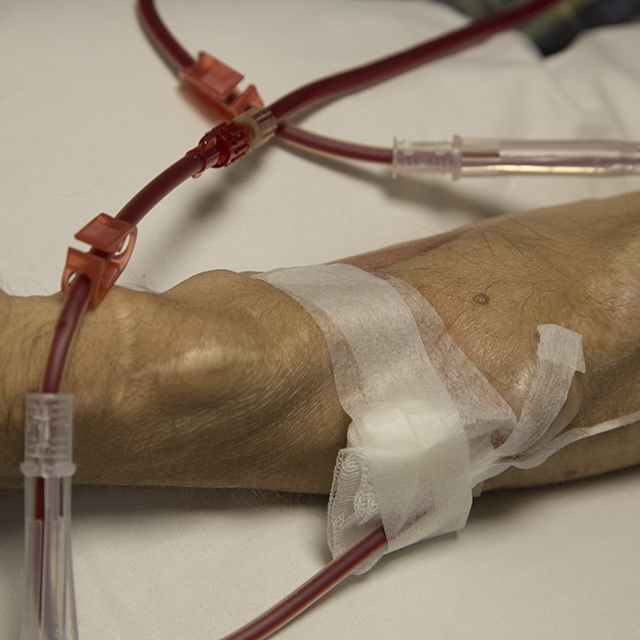Lucky with my fistula
Ed
Ed
I have a fistula: there’s two main ways for haemodialysis. One is to have a fistula – well, there’s actually several [laughs]. One is to have something like a fistula, which is basically an artery joined to a vein, and it creates an arterial flow in the vein. And it makes it grow big enough to get sort of strong enough that you can get those big needles in and get a good flow without the vein just sort of – you know, whatever the word is … collapsing – yeah, that’s the word [laughs]. Some people have a stent where you have a sort of plastic bit put in one of your veins, or it joins up a vein – and again, so that you can get a needle in there. And other people have a line that sort of goes into one of the major sort of veins, I guess, or arteries, I’m not sure, in the sort of chest area. I’ve only ever had a line when I started this because this takes about 6 or 8 weeks to sort of get going strong enough to actually use.
I’ve been really lucky with my fistula – it’s lasted 20 years now. And I like the fact that when I walk out of here, I don't have any – there’s nothing in me, you know. And so, when I’m not here, as much as possible, I’m not on dialysis.
I’ve been really lucky with my fistula – it’s lasted 20 years now. And I like the fact that when I walk out of here, I don't have any – there’s nothing in me, you know. And so, when I’m not here, as much as possible, I’m not on dialysis.
